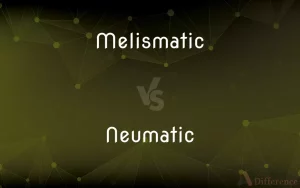Do you ever find yourself wondering about the different singing styles you hear in music? Well, you’ve come to the right place! In this article, we will explore the fascinating world of vocal techniques and shed light on the difference between syllabic, melismatic, and neumatic singing.
When it comes to syllabic singing, simplicity is key. It involves singing one syllable per note, allowing for clear and concise delivery.
On the other hand, melismatic singing adds a touch of complexity by embellishing a single syllable with a series of notes. This style is often used to showcase vocal agility and expressiveness.
Neumatic singing falls somewhere in between, with a few notes sung per syllable. It strikes a balance between syllabic and melismatic, creating a unique rhythmic pattern that adds depth to the music.
Throughout this article, we will delve into the intricacies of each style and compare their characteristics. So, get ready to expand your knowledge and gain a deeper appreciation for the art of singing!
Syllabic Singing: Exploring the Basics
Are you ready to dive into the world of syllabic singing? Let’s explore the basics together!
Syllabic singing is a style where each syllable of a word is matched with a single note. It’s a straightforward and simple approach to singing, making it an excellent choice for beginners. With syllabic singing, you can easily convey the meaning of the lyrics as each word is clearly pronounced.
This style allows for a clearer understanding of the text and can be found in various genres like pop, folk, and classical music. It provides a great foundation for developing vocal control and building a strong singing technique.
So, if you’re just starting out or want to focus on precise and articulate singing, syllabic singing is the way to go!
Also Read: Bragi: History And Worship Of The Norse God Of Music
The Art of Melismatic Singing
Melismatic singing is a true embodiment of vocal artistry. With its intricate ornamentation and expressive flourishes, it allows a singer to showcase their technical prowess and emotional depth. In this style of singing, multiple notes are used for a single syllable, allowing for embellishments, runs, and trills that create a stunning vocal display. By carefully navigating through the melodic lines, a wide range of emotions can be conveyed, bringing the lyrics to life in a captivating manner. Mastering melismatic singing requires precision, control, and a deep understanding of the music to execute melismatic passages with finesse. As you master this art form, you will mesmerize audiences with your ability to effortlessly navigate complex musical passages while conveying deep emotions through your voice.
Understanding Neumatic Singing Techniques
Mastering neumatic singing techniques will allow you to effortlessly convey a wide range of emotions and captivate your audience with the intricate ornamentation and expressive flourishes of this unique vocal style.
Neumatic singing is characterized by the use of melodic phrases that consist of a few notes sung to a single syllable. Unlike melismatic singing, where multiple notes are sung on one syllable, neumatic singing spreads out the melodic line, giving each note its own syllable. This technique creates a more fluid and legato sound, allowing for greater clarity and articulation of the text.
Neumatic singing requires precise control of breath and vocal placement, as well as a deep understanding of musical phrasing. By mastering neumatic singing techniques, you will be able to add depth and nuance to your performances, captivating your audience with the unique beauty of this vocal style.
Comparing the Styles: Syllabic vs. Melismatic vs. Neumatic
A key distinguishing factor lies in the manner in which the vocal lines are structured, with syllabic, melismatic, and neumatic styles each offering their own unique approach to conveying musical expression.
Syllabic singing, as the name suggests, focuses on one syllable per note, allowing for clear enunciation and emphasis on the text. This style is often used in hymns and folk songs, where the words are of utmost importance.
On the other hand, melismatic singing involves multiple notes being sung on a single syllable, creating a fluid and ornamented vocal line. This style is commonly found in genres like R&B, soul, and gospel, where vocal agility and embellishment are valued.
Neumatic singing falls somewhere in between, with a small group of notes assigned to each syllable, allowing for a moderate level of melodic flexibility while still maintaining a clear connection to the text.
Also Read: How To Spend Your Time With Music
The Role of Vocal Expression in Music Performance
The vocalist’s emotive delivery takes center stage, infusing the music with passion and intensity. When it comes to vocal expression in music performance, the way a singer delivers the lyrics can greatly impact the overall experience for the listener.
The use of vocal techniques such as syllabic, melismatic, and neumatic singing can convey different emotions and create unique musical effects. Syllabic singing, characterized by one note per syllable, allows for clear and concise delivery of the lyrics, emphasizing the meaning of the words.
On the other hand, melismatic singing involves the use of multiple notes per syllable, allowing for more intricate and embellished vocal melodies, adding depth and richness to the music. Neumatic singing falls somewhere in between, with a few notes per syllable, giving the singer some flexibility in terms of melodic expression.
Overall, the vocal expression brings life and emotion to the music, making it a captivating experience for both the performer and the audience.
Conclusion
So now you know the difference between syllabic, melismatic, and neumatic singing. You’ve explored the basics of syllabic singing and delved into the art of melismatic singing. You’ve also gained an understanding of neumatic singing techniques.
By comparing these styles, you’ve seen how each one brings its own unique qualities to music performance. And throughout it all, you’ve discovered the crucial role that vocal expression plays in bringing music to life.
Keep practicing and experimenting with these techniques, and continue to let your voice shine in your performances.



